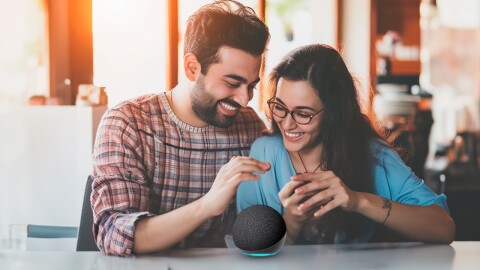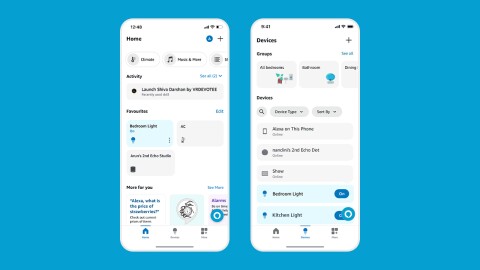It’s 8 am and the bell has just rung at the Ramkrishna Parmhans Marg Municipal Marathi school in Mumbai. You’d expect students to still be settling in slow to get their books out, and perhaps dodging last-minute laziness.
But anyone passing by teacher Puja Sankhe’s class 8 is in for a surprise. A room full of students sit upright and eager to begin the day, a ripple of excitement evident.
The reason? An Amazon Echo Dot smart speaker with a voice assistant is placed at the front of the class.

It all began in 2018, when the teacher thought, ‘Why not make learning a little innovative?’ Putting an Echo device in a mannequin she ordered online, she fashioned a new, friendly robot that the kids soon came to love.
Soon enough, teacher Puja’s classes became a hit. Students were in awe of the robot, laughed when it answered their questions and stood amazed at how one “person” could know so many subjects.

AI & the evolution of the classroom
Today, the concept that teacher Puja follows in her classes is the same, albeit without the mannequin.
“While I still bring out the mannequin during a few classes, I usually teach with the Echo Dot speakers and Alexa,” she says, adding that during the lockdown, she even took virtual classes with Alexa next to her so that the children’s questions could be answered easily.
Every day begins with meditations that Alexa suggests. Then, students begin by framing their questions to be answered by the AI in English.
But it’s not just the students of Ramkrishna Parmhans Marg who have found an exciting and new way to learn. Across India, slowly, traditional blackboards and chalks are being complemented by different forms of AI with enhanced features, innovative techniques and interestingly, an almost human side.
Amazon’s Alexa is on a path to not just make learning more fun, but also revolutionise the education sector. Here are five ways how:
1. Kindling curiosity among children:
We move from the city of Mumbai to Gorakhpur in northern India, where Kalindi, a master trainer at Sparsh Rashtriya Kanya Inter College, Gorakhpur, Uttar Pradesh, goes the extra mile for her students. She wants to ensure that students who are blind, especially girls, get quality education and equal opportunities. She says that every time she gets Alexa out, the children cannot control their excitement.
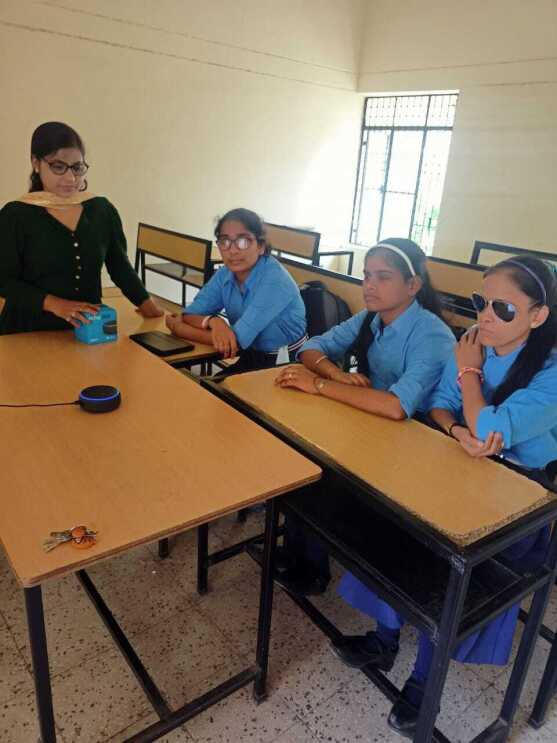
“They love Alexa,” she says, adding that what they most admire about the AI is that no matter what the question is, they always get an answer. “Children are always curious about anything and everything, and Alexa satiates their hunger for knowledge while being interactive.”
Alexa is also a source of fun for children. Rahat Unnisa, the headmistress at GUHPS Venkateshapura, a government Urdu school in Bengaluru, says she encourages kids to use Alexa in class, especially for general knowledge and stories.
“My teachers tell me that the children are more than enthused to learn spellings of words from Alexa and then use them in sentences,” she says, recalling an incident where she saw a classroom of students enthusiastic to learn topics about forming new words, learning synonyms for simple words and then using them in new sentences.
2. Knowledge of all subjects:
“We have to teach students braille and abacus as these things will help them in the real world. But AI helps children with visual disabilities get information while also visualising what they have just learnt using braille,” says Rakesh Kumar Soni, a visually-impaired teacher who has pursued a B.Ed in visual impairment.
Currently, he visits multiple schools across Basti district in Uttar Pradesh and teaches children the basics of mathematics.
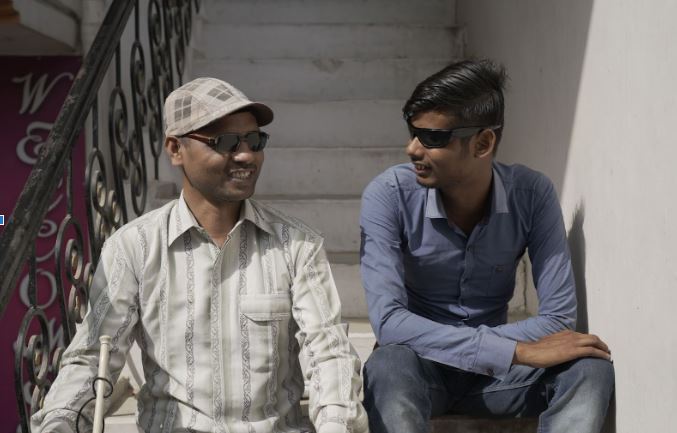
He isn’t the only one who believes that Alexa has been a boost for children who are visually impaired. Kalindi agrees as well. “For kids with a visual disability, language is their only mode of communication. They cannot learn by observing. Hence, when an AI overcomes this barrier by simplifying topics to a level that kids can grasp, it is wonderful.”
Another teacher Amit Awasthi from Bastar district in Chhattisgarh says that what’s amazing is that children do not hesitate before asking Alexa questions. “They feel so free to pose a doubt no matter the subject it is about,” he says.
3. Mentoring children who don’t have resources:
As they say, learning does not stop outside the four walls of the classroom. It extends into the child’s life outside, and even in their home. Rakesh says, “Many of the children we teach on a day-to-day basis are those whose parents are not educated. They come from backgrounds where they cannot ask questions at home, as their parents may not have the answers.” He adds that in cases like this, Alexa is the only access to technology, assumes the role of a mentor, and gives these children a chance to learn and understand, no matter what their background is.
As Amit adds, Alexa helps take some load off the teacher. He says, “Sometimes, there are topics that we do not know much about or may not have the amount of information that the child may want. In these cases, it is wonderful to have an AI assistant that can answer all their questions correctly.”
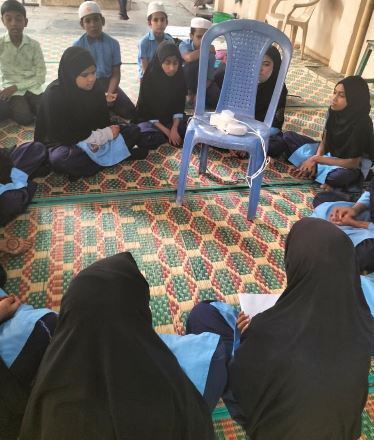
4. Learning opportunities for every age group:
Principal Rahat fondly recounts an incident where one student in class 3 asked Alexa to mimic the sounds of different animals. “The kids were thrilled to hear a device be able to make all the sounds perfectly.” She adds, “I remember a teacher came to me one day, all enthusiastic. She asked Alexa to narrate a story in class and then asked the children to write down the new words they heard. One child had written 50 new words!” This, she says, amazed her and the teacher. “Even a task like writing down English words, which earlier would have been accompanied with groans and sighs, is now done so enthusiastically.”

5. Catering to different learning styles:
Teacher Puja says she loves that with Alexa; no child feels left out. “Often as teachers, we are not able to give every child that personalised attention that they need. While teaching Mathematics, for instance, some kids may watch us solve a problem on the board and immediately understand. Some may even be confident to try it themselves. But some may require extra guidance and continuous approval of their work. Alexa bridges this gap.”
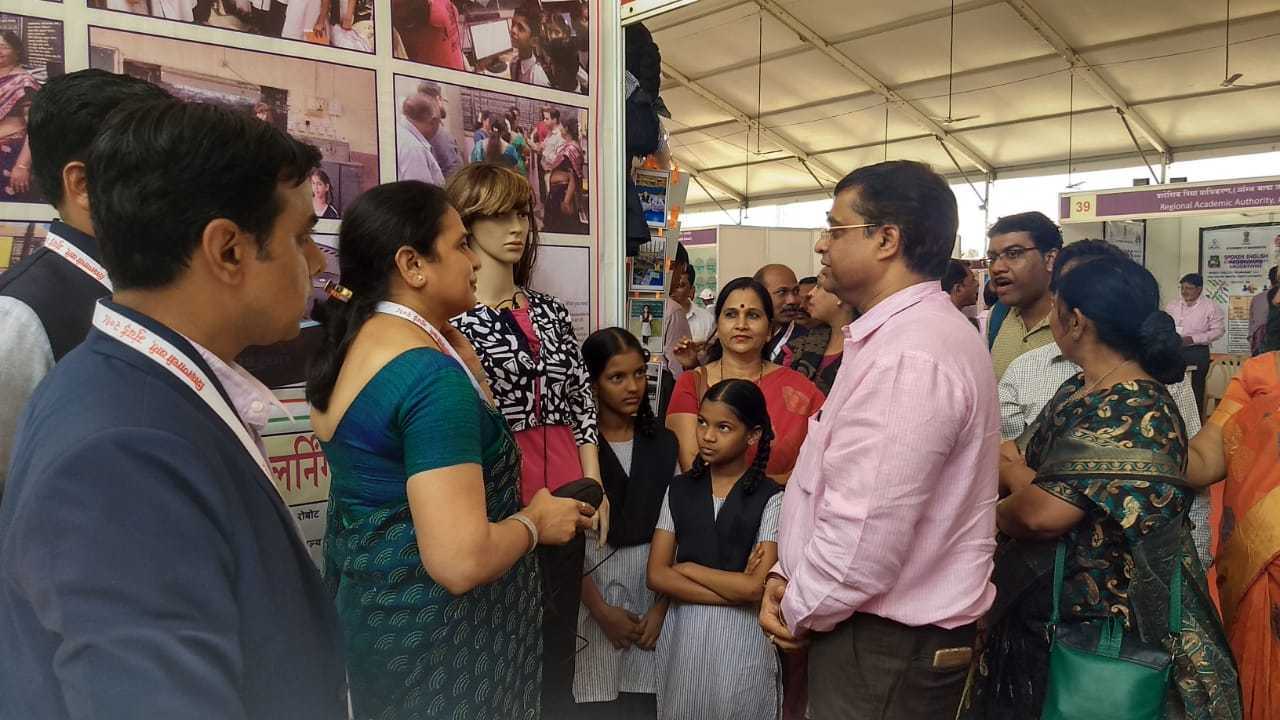
Thus, students can get their answers checked by Alexa no matter which step of the math equation they are at. “This not only eases the process for us but also ensures that every child is learning at their own pace,” Puja says.
(This article first appeared in The Better India and has been reproduced with permission.)
If you have a story of your own about how you use Alexa, we'd love to hear it and will continue sharing some of our favorite #AlexaStories. You can email us, and use #AlexaStories when you share your experiences on social media. Learn more about how Alexa is helping people in different ways.






